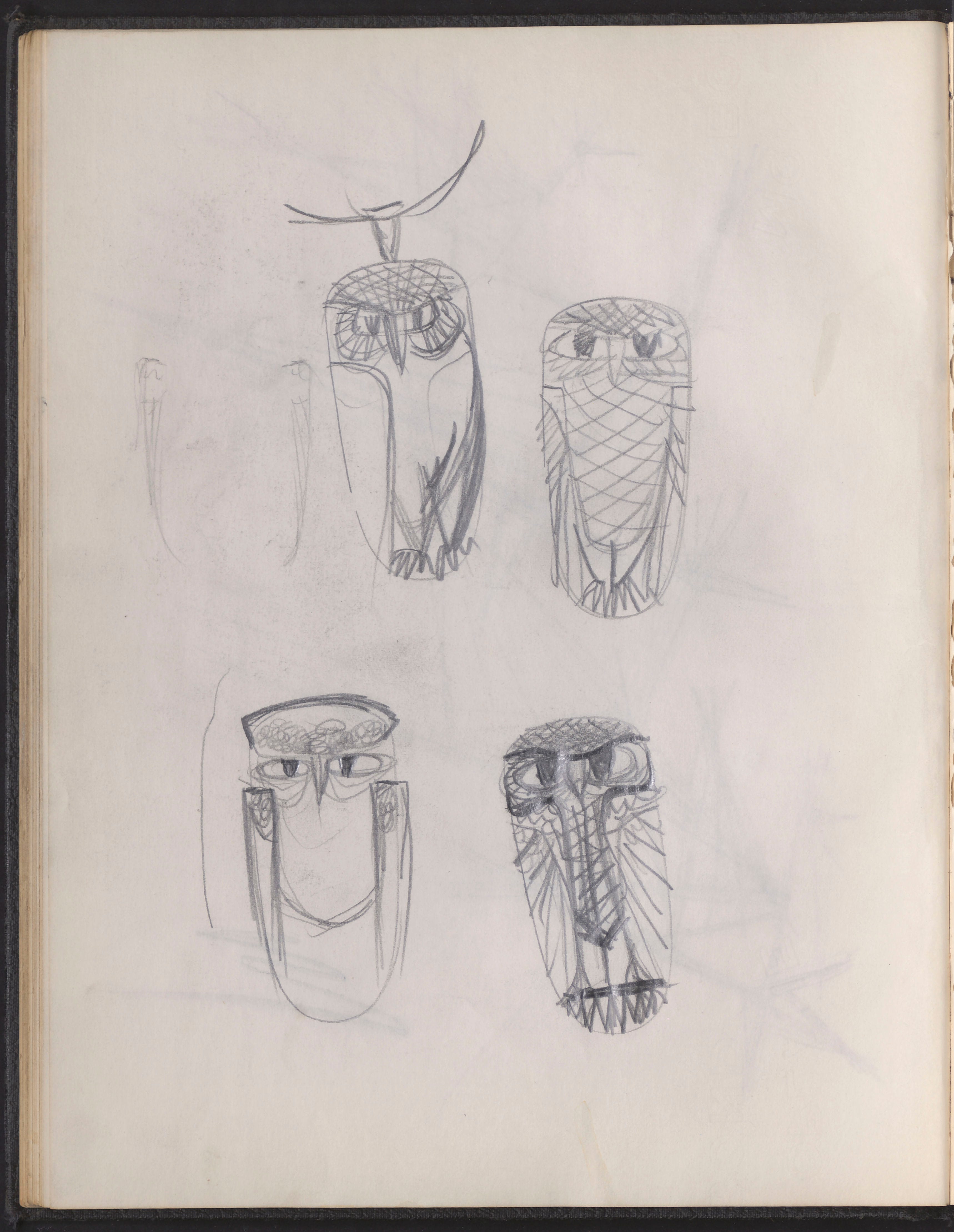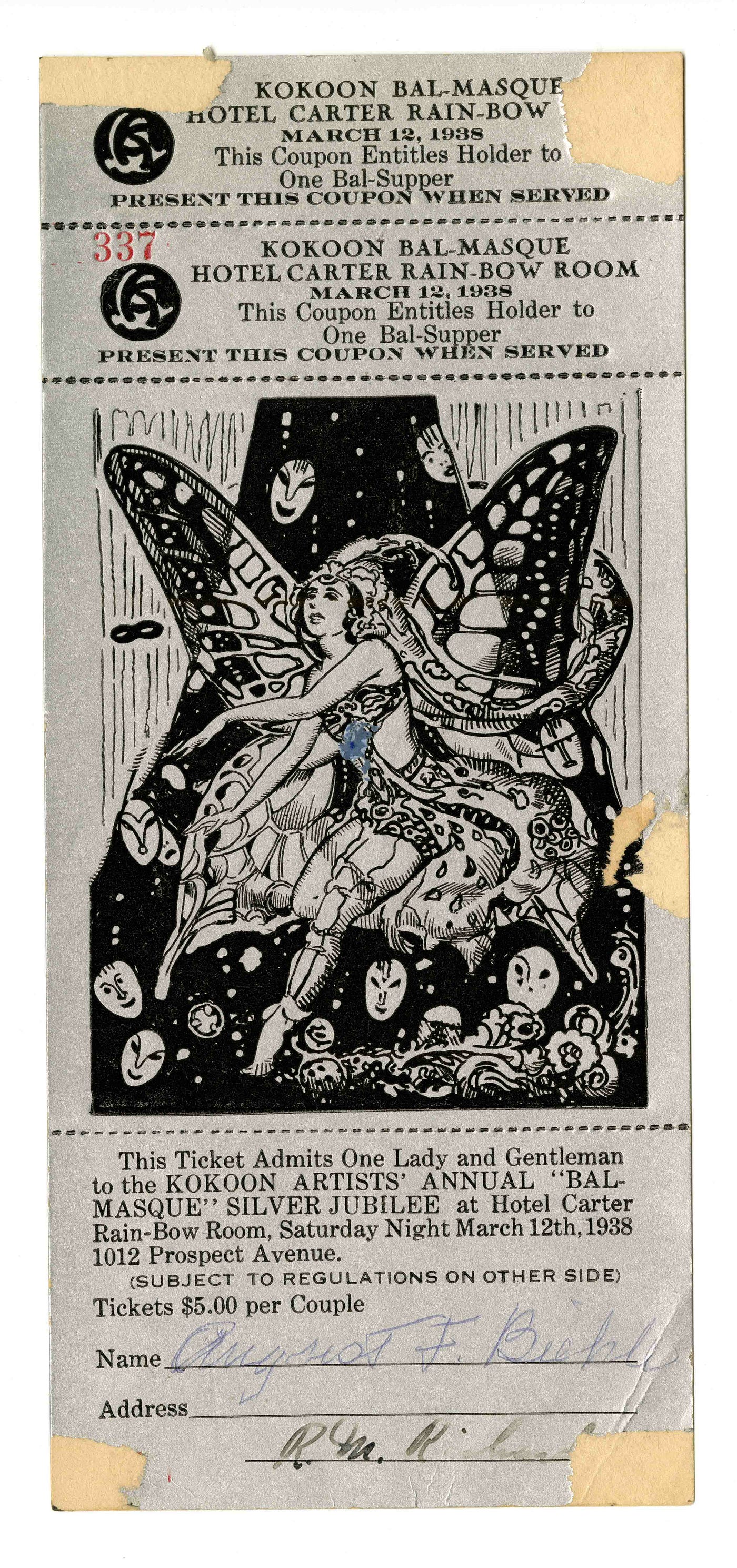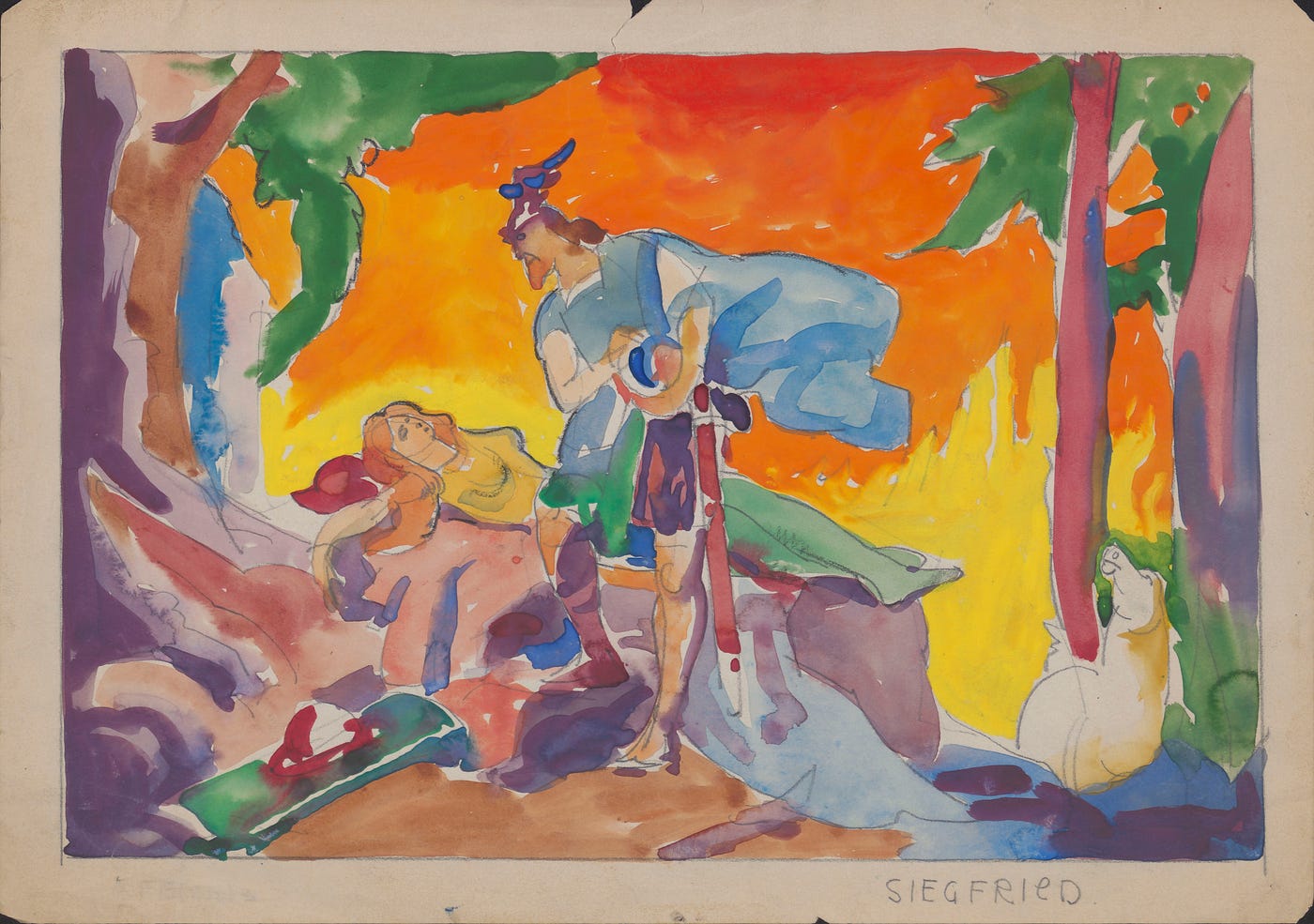By Sara Kunkemueller, Digitization Intern, Ingalls Library and Museum Archives
This summertime, I joined the Ingalls Library and Museum Archives as a digitization intern. My function involved a number of tasks, from updating metadata to scanning publications for the Internet Archive, but much of my time was dedicated to digitizing artists’ collections in the archives. The very first supplies I scanned were John Paul Miller’s sketchbooks.
Miller (1918–2013) was a renowned Cleveland jeweler. Possessing graduated from the Cleveland Institute of Artwork (CIA), he returned following Army support in World War II to be a part of the school’s team as a professor. At the exact time, he started manufacturing parts for nearby jewelry store Potter & Mellen. Though Miller was trained in industrial layout and invested his occupation focused on jewellery, he also harbored a deep appreciate for watercolor and generated both images of his travels and a variety of video clip resources. For the duration of his tenure at the CIA, long lasting additional than 40 a long time, he taught all these subjects. Miller’s perform has been obtained by several non-public collectors as very well as by the Cleveland Museum of Artwork (CMA) and the Renwick Gallery, amongst some others.
Miller is regarded for his use of granulation, a procedure most effective recognized from archaeological jewelry. By way of the granulation system, small beads of metal are affixed to a larger form devoid of soldering. Miller employed granulation to generate hugely intricate floor textures and styles. Concentrating on each geometric abstractions and realistic animal and insect forms, Miller’s use of granulation lends his physique of get the job done an all round stylistic coherence, weaving a modernist aesthetic into natural surfaces. His sketchbooks are loaded with repetitive drawings, where Miller performs with the variety of the granulation sample. Since Miller’s sketches are relatively close in measurement to his last products, there are numerous pieces in the CMA’s selection, in the archives’ May well Clearly show data, and in other artwork galleries that can be matched just about accurately to these pages.



Miller’s sketchbooks increase his overall body of get the job done with in-depth notes on construction, which includes experimental notes produced in the workshop. Various are filled with metallic dust, and even small scraps of discarded gold, suggesting that they lived on his workbench and that models were matter to revision for the duration of output. In a single occasion, Miller wrote out instructions for a small film following the generation of a single of his parts, leaving driving a meticulous record of his system. Alongside with charges and other information, the within handles commonly have a record of names or titles indicating which is effective of his had been commissioned, established for a individual clearly show, or developed in collection. In sketchbook 19, there is also a prolonged handwritten insurance policy appraisal detailing the trivialities of a piece’s design, from elements to approaches. All of this is relevant to upcoming collectors and conservators of Miller’s get the job done, but it also preserves his in depth awareness of metalworking and could likely provide as a educating help. Miller’s sketchbooks consist of a prosperity of information about his items, his teaching methods, and his particular and expert passions.
All 32 of Miller’s sketchbooks are at present obtainable on the CMA Archives’ digital collections. Also available to watch are comprehensive renderings of his rings and pendants, photos from his outings to California and Antarctica, and illustrations or photos of his performs from the Could Clearly show assortment.
The remainder of my internship centered on the archives’ August F. Biehle Selection, composed mostly of sketch elements relating to various media and tasks during Biehle’s prolific profession. A son of German immigrant and decorative artist August Biehle Sr. (also represented in the electronic archives), Biehle (1885–1979) was a Clevelander who contributed immensely to the city’s booming artistic character in the early 20th century. Soon after completing his artwork training in Germany, Biehle returned to Cleveland just as it was achieving its peak of creative innovation and began performing at the Otis Lithograph Organization. About the training course of his vocation, he developed incredible commercials, murals, and paintings and grew to become a single of the most well known Cleveland faculty artists.
Biehle was also a member of the city’s preeminent eclectic artwork organization, the Kokoon Arts Club. He brought with him both of those inventive talent and inspiration, acquiring viewed an influential exhibition of Der Blaue Reiter (The Blue Rider), a German Expressionist team, in Munich in 1912. This informed Biehle’s possess modernist is effective and, in switch, proved to be a stylistic influence for other club customers. The archives’ collection has a number of Kokoon Club objects, like posters for club events, publication resources, and ticket patterns for the club’s well-known and lascivious balls. The Kokoon Club authorized Biehle to experiment with his formal artistic coaching, and the interaction concerning the club’s flourishing modernists inspired him to delve into a variety of designs, such as the building Art Deco and Cubism movements.

Of distinct take note in the Biehle collection are sketch supplies relating to murals he generated for numerous infamous properties across the city, like the Kokoon Club, the Hofbräuhaus, and Herman Pirchner’s Alpine Village Theatre Cafe. These mural sketches, frequently rendered loosely in gouache on paper or board, are putting not only due to the fact of their splendor but also because quite several visible information of the murals continue being. The Kokoon club, for illustration, featured many Biehle performs on its partitions all through its heyday. Nonetheless, soon after the club’s decline and disbandment in 1956, Biehle’s murals were being demolished with the making. This is also legitimate of his extensive operate in Pirchner’s Alpine Village, notably Biehle’s depictions of fantastical scenes and typical times from opera and theater. His impact extended to the Eldorado Club earlier mentioned the restaurant, where by Pirchner hosted renowned visitors. In 1996, nevertheless, that framework was razed as well. Although there are some photographic documents containing Biehle’s demolished mural works, they are generally concentrated on society functions and the folks who frequented the areas fairly than on the artwork by itself. The sketch renderings of Biehle’s murals are some of the ideal remaining documentation of his existence in the course of influential buildings in the town.

Outside of Cleveland, Biehle signifies a fantastic encapsulation of the explosion of inventive innovation in the early 20th century. Stylistically adventurous, Biehle’s pursuits shifted over the study course of his vocation. He was a proficient attractive artist, getting apprenticed underneath his father, and his lithographs were being in direct dialogue with other crucial advertisers of his age. Biehle’s industrial will work contain excellent experiments of his peers’ creations, such as quite a few layouts for the Arrow Collar adverts that manufactured American artist Joseph Christian Leyendecker (1874–1951) renowned, as nicely as numerous observational reports that demonstrate the depth of his formal instruction. Biehle’s prints ended up at the forefront of the shift from Artwork Nouveau to Art Deco. In the later on pieces of Biehle’s job, his paintings took on a striking Cubist style and have been imbued with the dynamism of Futurism. His quite a few talents make him an exceptional example of the strength of Cleveland’s creative scene at its peak.
Biehle’s other function consists of a variety of colorful painted landscapes encouraged by Cubism. The CMA holds in its selection one particular these types of painting as very well as works on paper by the artist. To see the Biehle collection online, be sure to stop by https://digitalarchives.clevelandart.org/digital/collection/p17142coll15.






More Stories
Printing Your Digital Stamps on Alternative Surfaces
The Effect of Digital Technology in the Music Industry
The New Wave of Digital Fabric Printing Technology